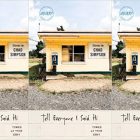Guest post by Scott Nadelson
Of course I’m not the first writer to express envy of the visual artist. As Geoff Dyer notes in Out of Sheer Rage, his book about not writing a book about D.H. Lawrence (a book I can’t recommend highly enough; it’s one of the funniest things I’ve ever read, and if you look at the cover, you’ll see that Steve Martin agrees),
Writers always envy artists, would trade places with them in a moment if they could. The painter’s life seems less ascetic, less monkish, less hunched. Instead of the austere mess of the desk there is the chaos of the studio: dirty coffee cups, paint smudged cassette decks, drawings of the artist’s girlfriend, naked, on the walls… For the writer the artist’s studio is, essentially, a place where women undress. Van Gogh may have warned that ‘painting and fucking a lot don’t go together’ but the smell of white spirits and paint is suggestive of nothing else so much as afternoon sex. Personally, I would love to have been a painter.
Not long after, Dyer acknowledges that this notion of the artist may in fact be a romantic delusion, with little connection to reality. This is something to which I can attest firsthand, being married to an artist myself. I have long since been disabused of the idea that the artist’s studio is a place where only magic happens–or sex, for that matter–and therefore should have been, by now, cured of my envy. But I haven’t, for reasons to which I’ll return next week.
First, though, to clarify: My wife isn’t a painter but a video installation artist, which may be the least romantic of all visual artists, since video installation studios aren’t filled with white spirits and paint smudged cassette decks and naked drawings, but instead with tangled RCA cables and extension cords and blinking external hard drives. And when my wife is working in hers, she’s usually as hunched as I am at my writing desk, bent over her video camera or over the keyboard of her editing station.
Unlike Pipilotti Rist and Leandro Erlich, both of whom, I have no doubt, are accompanied by a crew of assistants when installing a piece, my wife isn’t yet an international art sensation. As a result, her crew usually consists of one person. That’s right: her adoring husband.
Just last week, in fact, I helped take down her most recent show, a series of five multi-channel video pieces made up of a total of fourteen TVs. And I’m not talking about flat-screen jobs, or plasmas, but the old cathode-ray tube variety (which, not being an international art sensation, my wife scrounges wherever she can find them). Heavy suckers, in other words. Here I am, hauling one out into the rain:
Art, I have come to discover, is work. Hard work. Not just mental activity, but serious physical labor. When my wife puts up an installation, it usually takes a week solid, twelve to eighteen hours a day. For the first couple of days it looks as if nothing is happening: there are a couple of holes in the gallery walls, and tools scattered everywhere, and dozens of diagrams attempting to solve the impossible puzzle of how to position projectors to make sizable images in too small a space. “How’d you do it last time?” I’ll ask my wife, and she’ll shrug and give an innocent smile. If she had any memory, she says, she’d never get anything done. She’d remember what a nightmare the last installation was and never agree to do another.
The next couple of days are pure chaos, with cables dangling and PVC sticking out from the walls and Quiznos wrappers gathering in piles on the floor and me on an unbearably high ladder with a drill or some other power tool I barely know how to use, and the whole time I’m thinking, just let me make it through this so I can get back to the austere mess of my desk and laptop, plinking keys for two or three hours at a stretch and then rewarding myself with half a tub of ice cream and a long nap–my typical version of a hard day’s work.
At this point it always looks as if there’s no possible way for an art show to emerge out of this disaster. The gallery will open, and I’ll still be up on a ladder trying to figure out how to use a drill, and my wife’s career will be over. I start to panic by then, and expect my wife to do the same, but when I ask what will happen if we don’t finish in time, she only shrugs again and gives me that same innocent smile and says, “Oh, it’ll come together. Somehow. I think.”
On the last day before the opening things aren’t looking much better. The projectors are hung, but one of the stereo speakers isn’t working, and the DVDs are taking twice as long to burn as we’d expected, and yes, I’m panicking again, but less intensely now because I’m exhausted and am beginning to get sick–pneumonia, I think, or maybe leukemia. In fact, I’m so tired by now that I’m actually starting to envy writers again–writers who aren’t married to video installation artists, that is–but one of the screens is sagging, so I’m back up on the ladder, or hanging by one foot from the rafters, rigging up an extra support with dental floss because we’ve run out of cable and don’t have time to make our fifteenth run to Home Depot…
And then, an hour before the show opens, everything does, in fact, come together. There is image, and sound, and nothing is falling down, and all the tools are put away, and our food wrappers are in the recycling bin. The first viewers arrive, wearing incredibly stylish clothes, sipping from glasses of wine, and make polite noises of appreciation. When friends come in, I tell them how long it took us to put the piece up, my voice hoarse from the illness that has turned out to be neither pneumonia or leukemia but just a bad cold, and they say, “Really? It looks so clean, so simple.”
And here is where visual art and writing share common ground. From the inside, the process is blood and guts, nothing pretty about it, the possibility of failure hanging over every attempt. If you’re lucky, out of the mess some true vision arises, and if you’re skillful, when people see that vision they can’t detect any of the effort that brought it to life. But while the writer can walk away from a disaster mostly unscathed–in despair, maybe, but not the object of public humiliation–failure isn’t an option for the installation artist: Whether the piece is ready or not, the show will open, and people in stylish clothes will come in, wanting to take a peek.
Dialectically Placed, Alexandra Opie, 2007
Stalk, Alexandra Opie, 2008
This is Scott’s second post for Get Behind the Plough.



